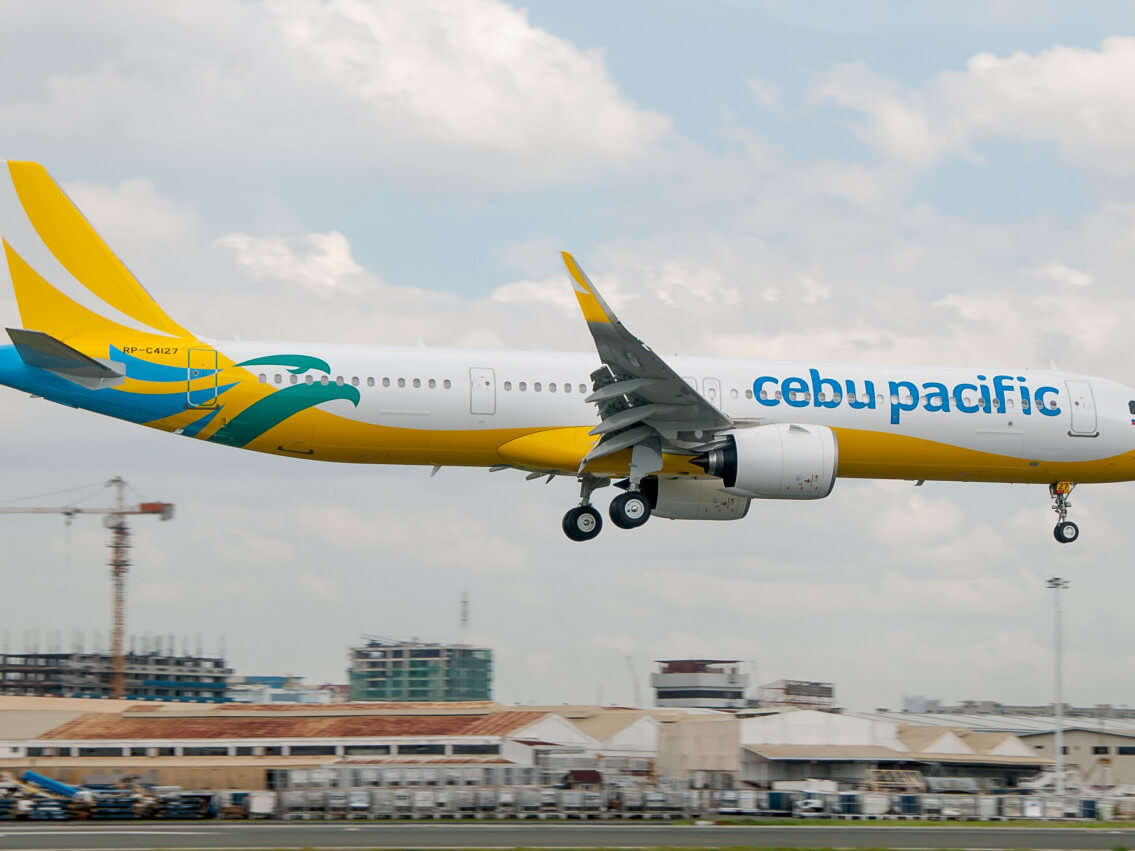

After giant aircraft manufacturers Airbus and Boeing had slugged it out with powerpoint presentations, plant tours, and backroom offers, the airline founded by the late billionaire John Gokongwei Jr. went to the score cards and awarded a P1.4-trillion deal to the defending champion, Airbus.
Shortly after the budget carrier announced the biggest aircraft purchase order in Philippine history, its chairman Lance Gokongwei granted InsiderPH an exclusive interview shed light on the decision making process behind what is also one of the biggest corporate transactions of any kind in the country’s history.
The mega deal’s rationale
“Let’s start with the premise: Why are we buying the planes?” he said. “It’s simple: We want to support growth in the Philippines with its [expected] 6% [average annual] growth rate and the demographic dividend.”
The 57-year-old billionaire — who also heads the family’s business empire under JG Summit Holdings — said the airline is now seeing increasing demand for travel, with tourism numbers rising as the growing economy lifts more Filipinos to middle class status.
“Then now, finally, the government's push for infrastructure, including the privatizations, is very encouraging,” he said, talking about positive developments in the country’s existing or upcoming airports. “So now is the right time: We have NAIA. We have Bulacan. Clark is already privatized, and a few other airports are going to be privatized.”
“Definitely, with more destinations to fly you, you’ll need more planes,” Gokongwei said. “Hindi na Manila na lang. There are more alternatives.”
The mega match
To support this kind of growth explosion, Cebu Pacific simply needed more planes — much more than the 87 jetliners and turboprops it currently has in its fleet, already the largest in the country.
“So we conducted a shootout between Boeing and Airbus,” he said. “And in the end, the Airbus-Pratt & Whitney combination won, because for us, they provided us with the best economic outcome.”
He explained that, in terms of the all-important profitability metric of “total cost of ownership per seat kilometer per passenger” Airbus won because its latest generation of A321 and A320 aircraft offered airlines the lowest operating cost for narrow-bodied — meaning single aisle — jets.
But deciding which aircraft manufacturer to engage for a deal that will last well into the next decade is not as straightforward as this, as a $24-billion deal inevitably has many moving parts and many issues to consider.
Pratt & Whitney woes
One such issue was the logistical problems encountered by US-based engine manufacturer Pratt & Whitney last year, which resulted in the firm being unable to supply spare parts for the maintenance required for the jets’ safe operation.
This resulted in Cebu Pacific having to ground several airliners at a time which, during peak travel season, resulted in many upset passengers and even prompted a Senate investigation.
“Pratt & Whitney is beginning to resolve the [engine maintenance] issues,” Gokongwei said. “We're confident the problems will be resolved over time. And they have a very long term contract with us to support these engines.”
Typically, these jet engines make up around 50% of the sticker price of a modern airliner. For the nominal $129-million tag for an A321neo, that means around $65 million is for the two jet engines that power it.
Pratt & Whitney’s troubles have caused it to lose market share against competitors like GE, but Gokongwei declined to discuss whether this gave Cebu Pacific leverage to negotiate for lower prices for Pratt & Whitney’s GTF (Geared Turbo Fan) engines that will power the airline’s new planes.
“I guess they gave us a very competitive offer,” he chuckled.
Going to Boeing?
Except for a couple of second hand Boeing 757s and the McDonnell Douglas DC-9s in the late 1990s, Cebu Pacific had always exclusively used Airbus-made planes for its jet fleet.
Using planes made by a single manufacturer made business sense for the budget carrier since it could save on pilot training costs if everyone just flew one kind of jet (or in the case of Airbus, one common cockpit layout among an entire family of jets).
So Cebu Pacific surprised everyone when it announced last year that it would consider shifting to Boeing for its 150-plane requirement “if the price was right”.
“In fairness to Boeing, they gave a very strong offer,” Gokongwei said. “But I think the combination of Airbus and Pratt & Whitney gave us superior economics.”
Was this threat of shifting to the US plane maker a ploy — a stalking horse — to extract a better deal from its longtime European suppliers?
“No, no, no, no. We very seriously considered [Boeing],” he explained. “I think they put their best foot forward and we're grateful to them for participating in the RFP (request for proposal).”
“In the end, we chose the aircraft that will keep Cebu Pacific competitive for many more years to come,” Gokongwei added. “And it provides the best economic outcome for our passengers.”
Long waiting list
But buying new airliners is not like shopping for new clothes in a department store. The wait for new plane deliveries from major manufacturers can be as long as ten years if one joins at the very end of the line.
But not so for Cebu Pacific, even if the line is long for the in-demand Airbus A320 family of jets.
“They set aside good delivery times for us,” Gokongwei said, hinting that the budget carrier’s orders will be expedited because of its standing with the European aerospace giant. “We’re a key customer for them. That also helps.”
As such, it was easier for the airline to choose Airbus over Boeing which had shorter waiting times for its 737 Max line, due in part to the highly publicized troubles besetting the US plane maker.
“In the end, [the Airbus] planes have been strong performers for us on a cost per available seat kilometer, in terms of passenger comfort and sustainability, aside of course from those hiccups with the Pratt & Whitney engines,” Gokongwei said. “And also, the incumbent always has an advantage. We want to operate a single aircraft type.”
Besides, he noted that deliveries for the 152-jet order announced on Tuesday will be staggered well into the mid-2030s.
“Our current plane orders end in 2027, I think,” he said, before the new batch of planes arrive between 2028 to 2035. “May outstanding [deliveries] pa kami.”
Lowest cost
So why should does all this matter for the average Cebu Pacific traveler who only wants to fly from point A to point B at the cheapest possible price, and who cares little for what kind of plane makes this possible?
Gokongwei explained that Cebu Pacific’s future passengers may not know it, but the announcement made today will help ensure that someone flying on the airline a decade from now will still enjoy today’s cheaper airfares.
“The bottomline is that, with this order, we will be able to keep our fares as competitive and affordable as possible for everyone,” he said.
He may have meant “every Juan”.

Senior Reporter
